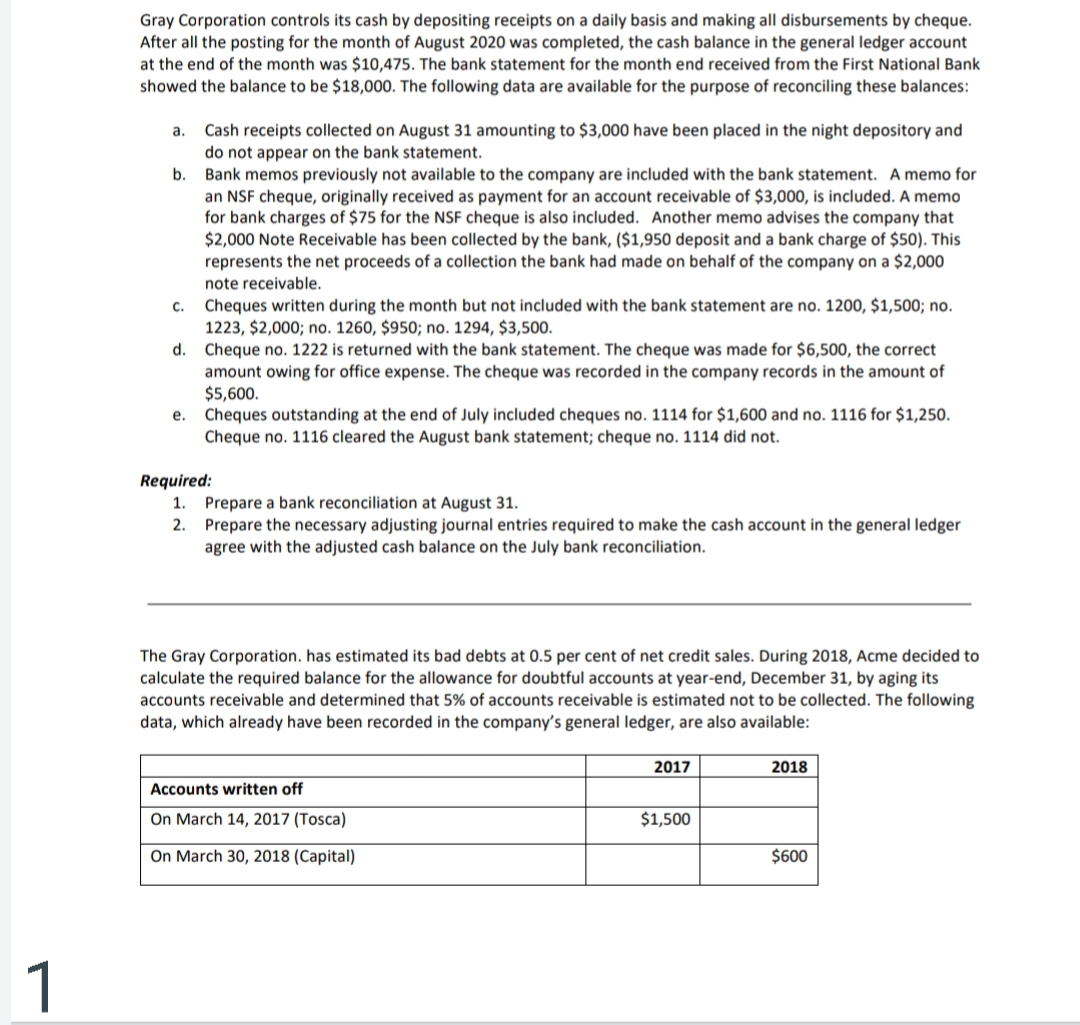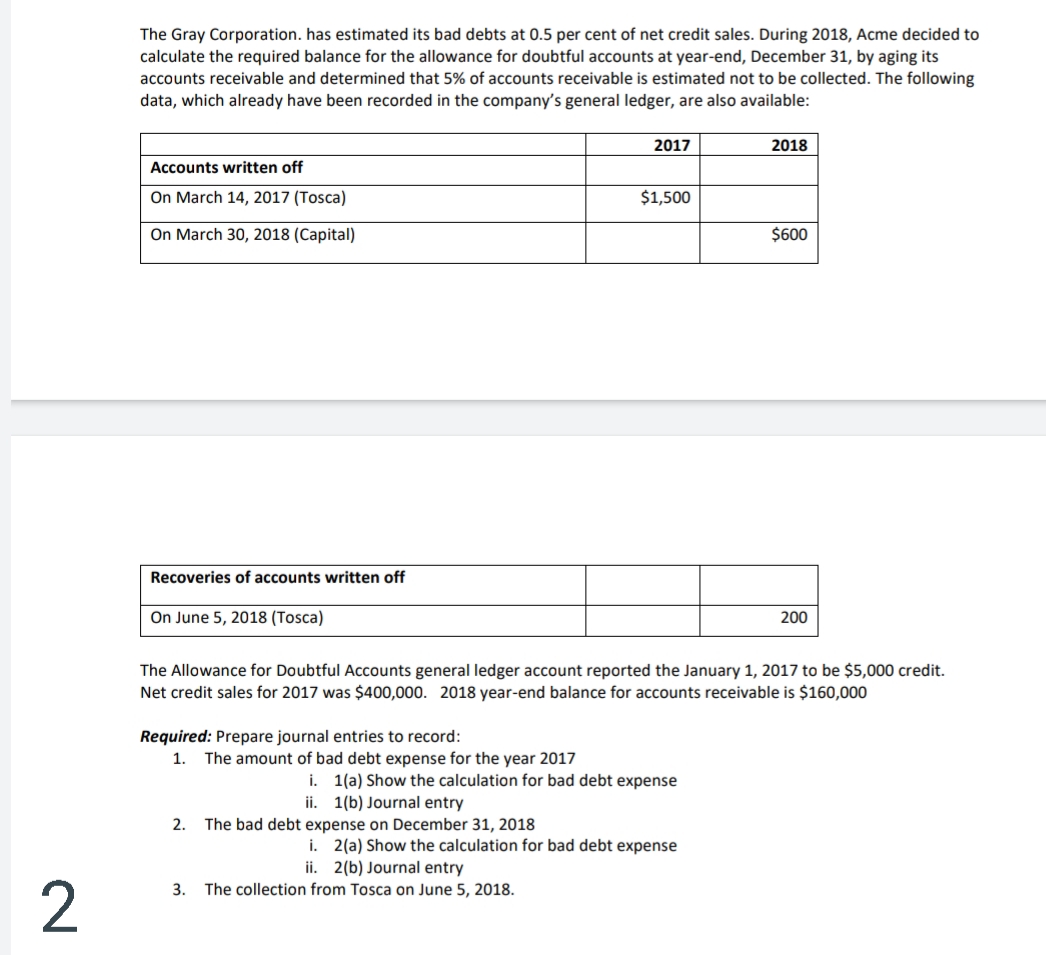Required: Prepare journal entries to record: 1. The amount of bad debt expense for the year 2017 i. 1(a) Show the calculation for bad debt expense ii. 1(b) Journal entry 2. The bad debt expense on December 31, 2018 i. 2(a) Show the calculation for bad debt expense ii. 2(b) Journal entry 3. The collection from Tosca on June 5, 2018.
Bad Debts
At the end of the accounting period, a financial statement is prepared by every company, then at that time while preparing the financial statement, the company determines among its total receivable amount how much portion of receivables is collected by the company during that accounting period.
Accounts Receivable
The word “account receivable” means the payment is yet to be made for the work that is already done. Generally, each and every business sells its goods and services either in cash or in credit. So, when the goods are sold on credit account receivable arise which means the company is going to get the payment from its customer to whom the goods are sold on credit. Usually, the credit period may be for a very short period of time and in some rare cases it takes a year.


Trending now
This is a popular solution!
Step by step
Solved in 2 steps









